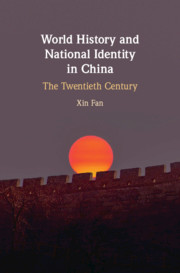Book contents
- World History and National Identity in China
- World History and National Identity in China
- Copyright page
- Dedication
- Contents
- Figures and Tables
- Preface and Acknowledgments
- Introduction: Control and Resistance
- 1 The Confucian Legacy
- 2 The Cultural Destiny
- 3 Becoming the “World”
- 4 The Forced Analogy
- 5 Imagining Global Antiquity
- Conclusion: World History and the Value of the Past
- List of Characters
- Bibliography
- Index
5 - Imagining Global Antiquity
Continuity, Transformation, and World History in Post-Mao China
Published online by Cambridge University Press: 19 February 2021
- World History and National Identity in China
- World History and National Identity in China
- Copyright page
- Dedication
- Contents
- Figures and Tables
- Preface and Acknowledgments
- Introduction: Control and Resistance
- 1 The Confucian Legacy
- 2 The Cultural Destiny
- 3 Becoming the “World”
- 4 The Forced Analogy
- 5 Imagining Global Antiquity
- Conclusion: World History and the Value of the Past
- List of Characters
- Bibliography
- Index
Summary
World history, like most academic disciplines, stagnated during the Cultural Revolution. This chapter argues that, with Mao’s death, world-historical studies witnessed a new wave of professionalization within the Marxist ideological framework. Following the liberalization of historical studies in the late 1980s, this ideological framework collapsed – even historians who were famous for their ideological correctness like Lin Zhichun abandoned it. In a series of influential debates, these historians searched for alternative paths to global modernity to replace the Eurocentric schema in Marxist historiography. Through this process, these former Marxist historians became increasingly nationalistic, which filled an ideological vacuum in post-Mao China.
Keywords
- Type
- Chapter
- Information
- World History and National Identity in ChinaThe Twentieth Century, pp. 153 - 191Publisher: Cambridge University PressPrint publication year: 2021

